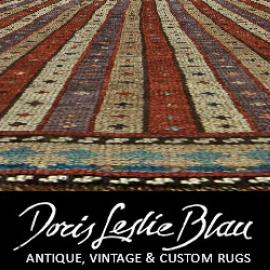Pewter
The Philadelphia Story
Philadelphia was founded in 1684, decades behind Boston, Massachusetts (1630), Newport, Rhode Island (1624), and New York City (1639). Nonetheless, thanks to the navigable Delaware River, Pennsylvania’s rich farmland, and the tolerant attitude of its founding fathers, it quickly grew to eclipse in population, wealth, and commerce all coastal port cities in the British North American colonies. Many visitors marveled at the vitality of its merchants and commented on the industrious nature of its artisans, who included cabinetmakers, silversmiths, wheelwrights, cordwainers (shoemakers), potters, and blacksmiths.
Pewterers, too, were among the earliest artisans to practice their craft in Philadelphia. Thomas Paschall arrived in the 1680s and Thomas Badcocke the following decade. James Everett and Simon Edgell were two other early arrivals, both being granted freedom to practice pewtering in the city by 1713. They were joined by others, some seventy-five of whom are recorded as having worked in Philadelphia throughout the following century and a half. These pewterers found ample demand for their wares as the city’s population grew, resulting in the astounding quantity and variety of pewter that emanated from their shops. Their wares were used in virtually every room in the typical Philadelphia household––the dining room (plates, spoons), parlor (tea and coffeepots), kitchen (funnels, colanders), bedrooms (bedpans, commodes), hallways (candlesticks, oil lamps) and nurseries (nursing bottles, porringers). Yet, this did not begin to exhaust the manifold uses to which Philadelphians put pewter: it was used in taverns (measures, tankards, mugs), in churches (flagons, chalices, patens), offices (inkwells, standishes), chandler’s shops (candle molds), doctor’s offices (clysters, syringe pipes), breweries (worms for stills, syphons). It was used outside (sundials) and as buckles on shoes, buttons on coats, and liquor flasks for pockets.
The oft-quoted author and antiquarian John Fanning Watson observed in his encyclopedic three-volume work Annals of Philadelphia and Pennsylvania, in the Olden Time (1830) that “pewter platters and porringers made to shine along a dresser were universal.” This popularity was not accidental. Pewter, with its attractive soft, silver-like sheen, has a low melting point (between 170 and 230 degrees centigrade), which made it easy to cast in molds, and its readily obtainable ingredients (tin, copper, lead, and antimony) made it affordable. Furthermore, when a pewter object broke or wore out through use, it could be easily recycled by melting and recasting; usually by professional pewterers in bronze molds, but nonprofessionals could cast small simple objects like buttons and teaspoons in cheap, easily carved soapstone molds.
The Philadelphia Antiques Show hosted a first-time exhibit on Philadelphia pewterers, their wares, and the many and sometimes surprising uses to which they were put by city residents. Pewter: The Philadelphia Story explored pewter from multiple perspectives, underscoring its great popularity throughout the first one hundred and fifty years of the city’s dynamic history. For the exhibition, public and private collections were canvassed for rare and notable examples, many of which were on view for the first time.
A major story line explored in the exhibit is the business of pewtering. It was a craft that took at least five years to learn under the training of a master. During that time apprentices would develop proficiency in practical matters such as manipulating the alloy, preparing molds into which it was poured, assembling the cast components into useful forms, finishing them with a finely polished surface, and stamping them with identifying marks. Apprentices were expected to develop an aesthetic sensibility that allowed them to design and make objects that were not only useful but attractive; an important aspect of the craft, since pewterers were competing for the same customers as potters, silversmiths, silver platers, coppersmiths, brass founders, and related craftsmen.
Within every creative endeavor a few rise above their contemporaries to be recognized as gifted. Philadelphia had such a pewterer: William Will, who worked from 1764 to 1798. Collectors and connoisseurs have extolled his pewter as the finest made in America during the eighteenth and early nineteenth centuries. The exhibition showcases a large and representative grouping of his pewter, impressive for its range of forms that met his customer’s practical needs and recognized as being among the most beautiful examples of metalware ever made in this country.

































